Aviation
Shearwater Aviation Museum restores a piece of their history
An old training plane helps tell the 'complete, total story' of Shearwater’s military history
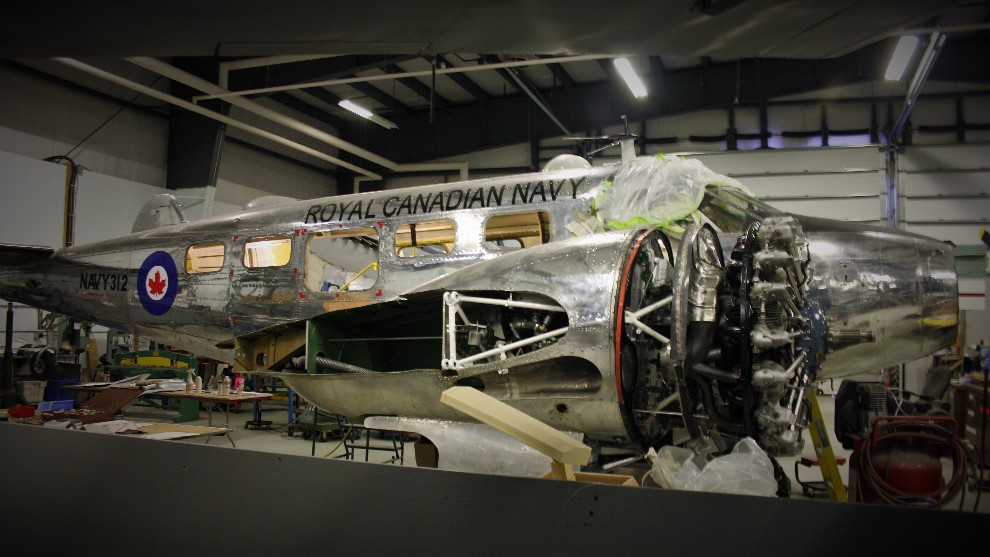
caption
The Beechcraft C-45 Expeditor undergoes restoration at the Shearwater Aviation Museum.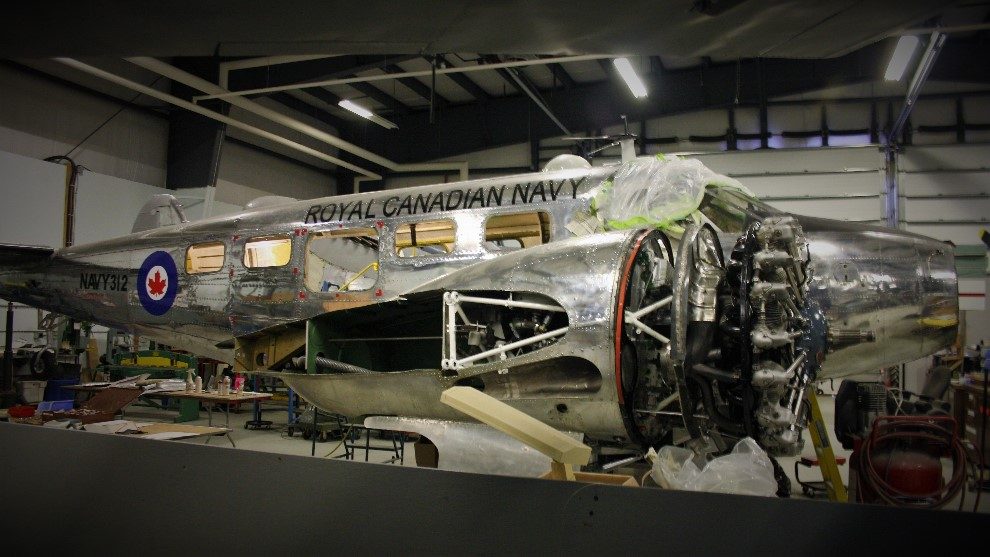
caption
The Beechcraft C-45 Expeditor undergoes restoration at the Shearwater Aviation Museum.A broken Beechcraft C-45 Expeditor, or Beech 18, has a dedicated team working to restore it back to its 1957 era after years in civilian circulation.
The Canadian Forces Base Shearwater first used the Beech 18 in 1957 as a utility and training plane. The Canadian Forces stopped using these planes in the 1960s and sold some of them to civilians.
John Webber, 71, the engineer for the museum’s aircraft restoration team, spent 36 years in the military working on aircraft. He works on the Beech 18 two or three times a week, since it arrived at the museum over two years ago. He also works at his own company three days a week.
“I should be crazy or something working six days a week at my age,” said Webber in an interview on Thursday.
“But working here is a labour of love. It’s the satisfaction of seeing (the aircraft) come in such terrible shape and then seeing them when they’re finished, looking like they did when they were active.”
The Shearwater Aviation Museum found and then bought this Beech 18, which was once stationed at Shearwater’s base, from a parachute club in Valcourt, Que. Webber said the museum’s foundation paid $7,000 for the plane and $2,500 for shipping.
The restoration workshop is in the back corner of one of the hangars at the museum. It’s easy to know when the team is working because of the sounds of clanking metal, buzzing drills, and at times, laughter.
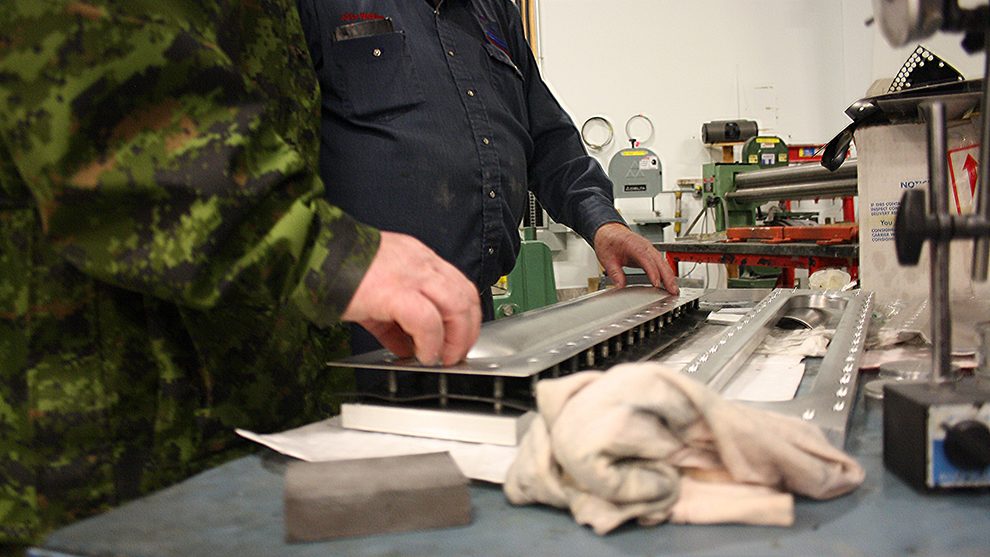
caption
Webber (right) working on restoring aircraft at the Shearwater Aviation Museum.Webber said they can’t restore Beech 18 to the point where it could fly again because of the damage it suffered in civilian hands. The plane’s final flight with the parachute club ended in a landing with the wheels up, leaving both piston engines damaged and propellers ruined.
“To overhaul one of those engines, would probably cost you $50,000 each,” said Webber. “And each propeller ten (thousand), and then you still only got an airplane that’s worth 50 (thousand) when you’re done. So you would have to haul a lot of parachuters to make it worth your while.”
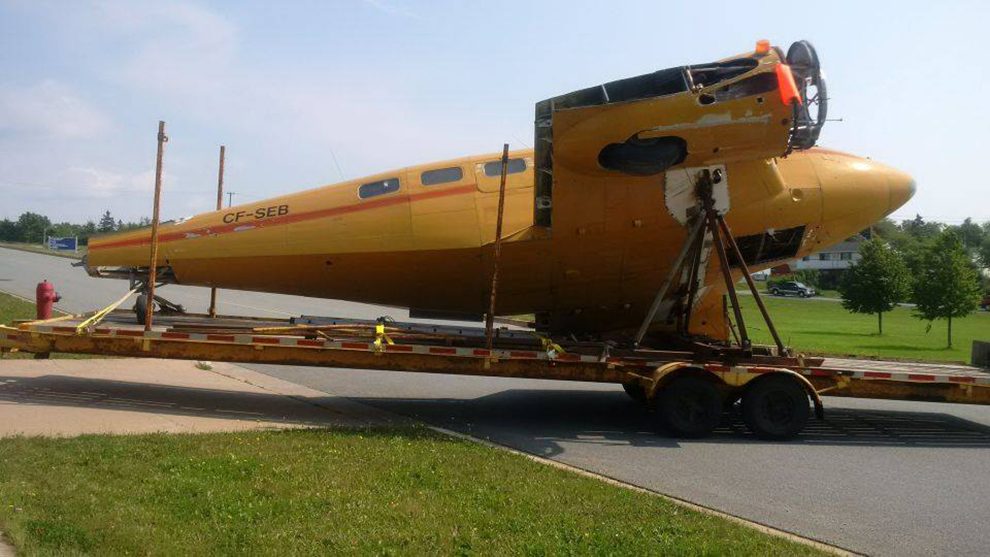
caption
The Beechcraft C-45 Expeditor when it arrived at Shearwater Aviation Museum in September 2015.During the plane’s time in civilian hands, owners painted it yellow and modified the pilot-side door so parachutists could jump out safely. It took Webber and the team a year and a half to remove the yellow paint and polish the metal underneath.
Webber said finding parts can be one of the hardest tasks when restoring an aircraft. One of the many parts they still need is the Expeditor’s nose.
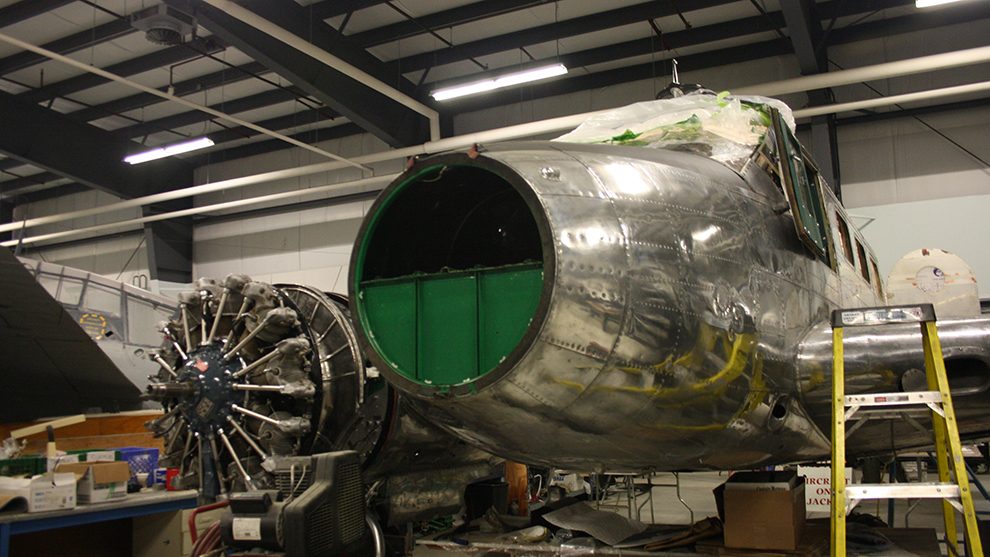
caption
The Beechcraft C-45 Expeditor waits for its metal nose to replace the fiberglass nose.“Things get changed over the years,” said Webber. “And the metal nose cap got taken off at some point, for whatever reason, and a fiberglass one was put on. But that’s no good to us because we want the airplane to look like it did in 1957, when it was stationed here in the VU-32 squadron.”
He also said thousands of Beech 18s existed in the world, so finding one that was actually stationed at the Canadian Forces Base Shearwater is a real “jewel.” He can prove this from the plane’s serial number.
Webber said they are still working on where the Beech 18 will go because they have to make room for two Sea King helicopters the museum is scheduled to get in the near future.
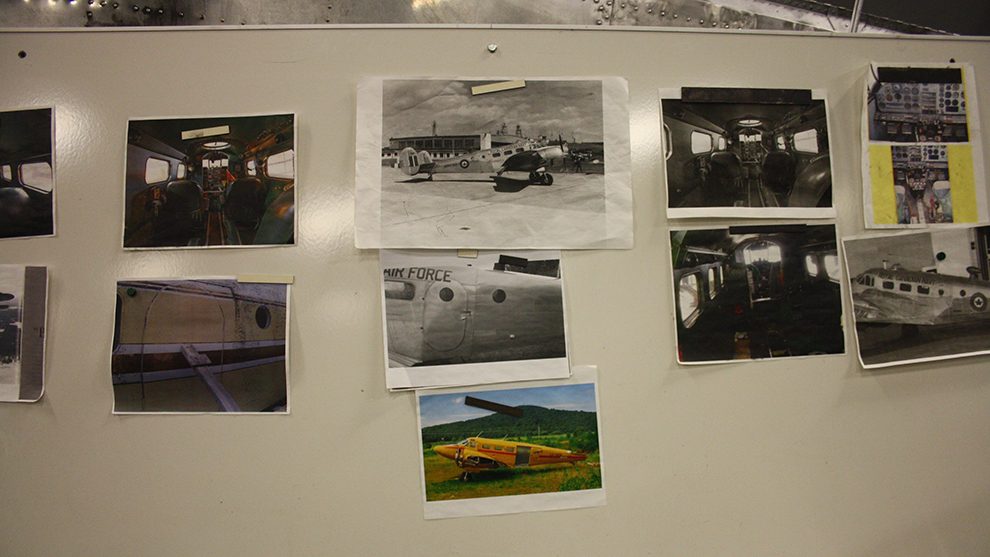
caption
The restoration team’s reference photos for the Beechcraft C-45 Expeditor.Christine Hines, curator of the Shearwater Aviation Museum, said this particular plane wasn’t a large aircraft that went on heroic missions because it was more of a training plane. The people who did fly the large planes wouldn’t have been able to do so without the Beech 18.
“Training for me has always been a difficult story to tell and to interpret in a museum setting, so having an aircraft like the Beech is really important to round out the complete, total story,” she said.
The Beech allowed pilots to learn how to fly multi-engine aircraft, which they may not have learned in basic training.
Hines said they don’t have a set date for when the team will finish the Beechcraft C-45 Expeditor because it’s mostly made of up of volunteers. However, guests can still see the plane on display at the museum while it’s being restored.

